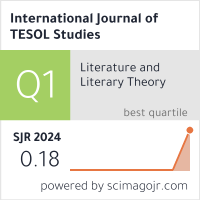2632-6779 (Print)
2633-6898 (Online)


Scopus
Ulrich’s Periodicals Directory (ProQuest)
MLA International Bibliography
MLA Directory of Periodicals
Directory of Open Access Journals (DOAJ)
QOAM (Quality Open Access Market)
British National Bibliography
WAC Clearinghouse Journal Listings
EBSCO Education
ICI Journals Master List
ERIH PLUS
CNKI Scholar
Gale-Cengage
WorldCat
Crossref
Baidu Scholar
British Library
J-Gate
ROAD
BASE
Publons
Google Scholar
Semantic Scholar
ORE Directory
TIRF
China National Center for Philosophy and Social Sciences Documentation
Anne FJ Hellwig
University of Wollongong, Australia
Abstract
This paper explores the practice of using multimodal, digital assessment tasks assigned to students of an English for Architects and Civil Engineers course at a university in Germany. Students were tasked with creating multimodal video compositions and interviewed about the processes behind composing their artefacts. The goal was to interrogate to what extent multimodal assessment tasks such as these can promote the communication of technical concepts, facilitate nuanced opportunities for language development and develop the students as social agents. The artefacts were examined through the lens of Systemic Functional Semiotics, drawing particularly upon the Genre and Multimodality framework (Bateman et al., 2017; Bateman & Schmidt-Borcherding, 2018) and a recent approach to analysing multimodal artefacts developed by Turney & Jones (2021).
Keywords
Multimodality, TESOL, Systemic Functional Semiotics, Genre and Multimodality Framework